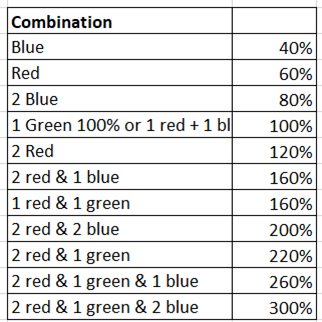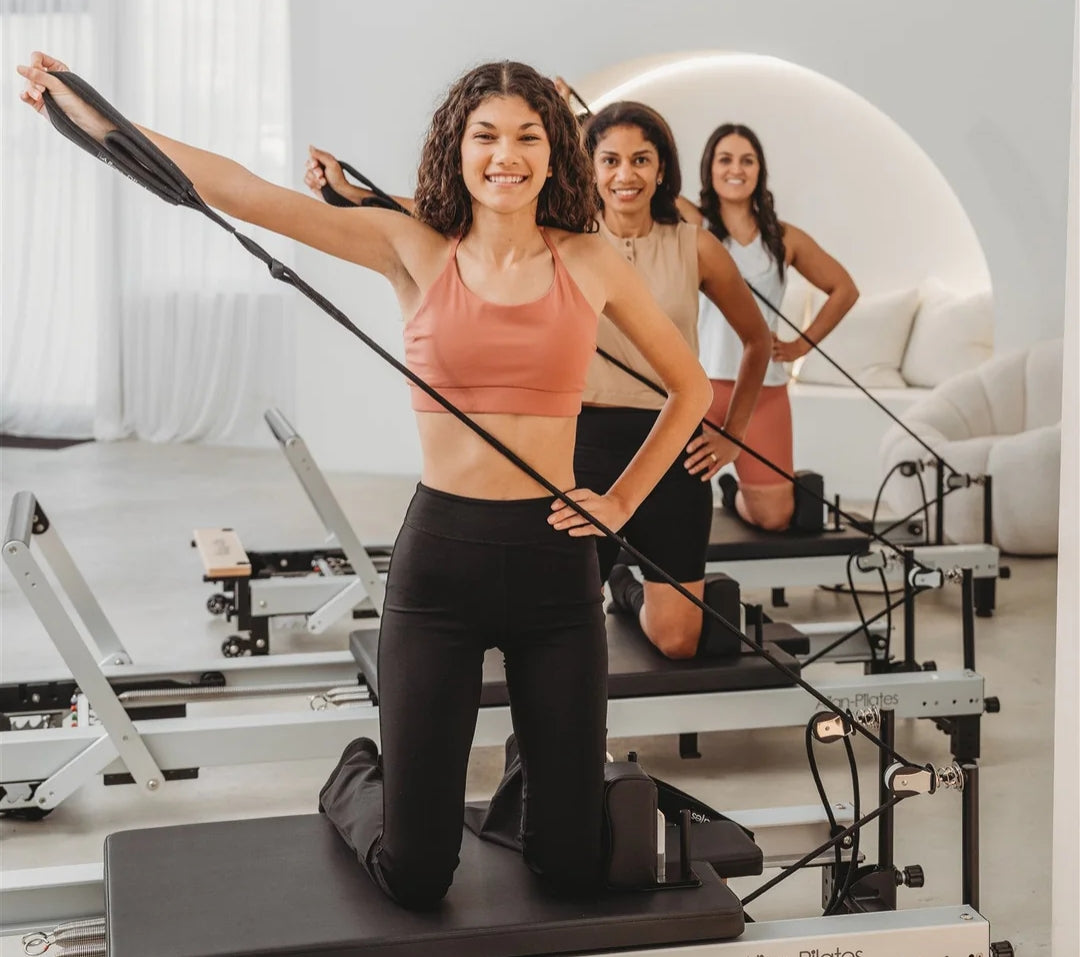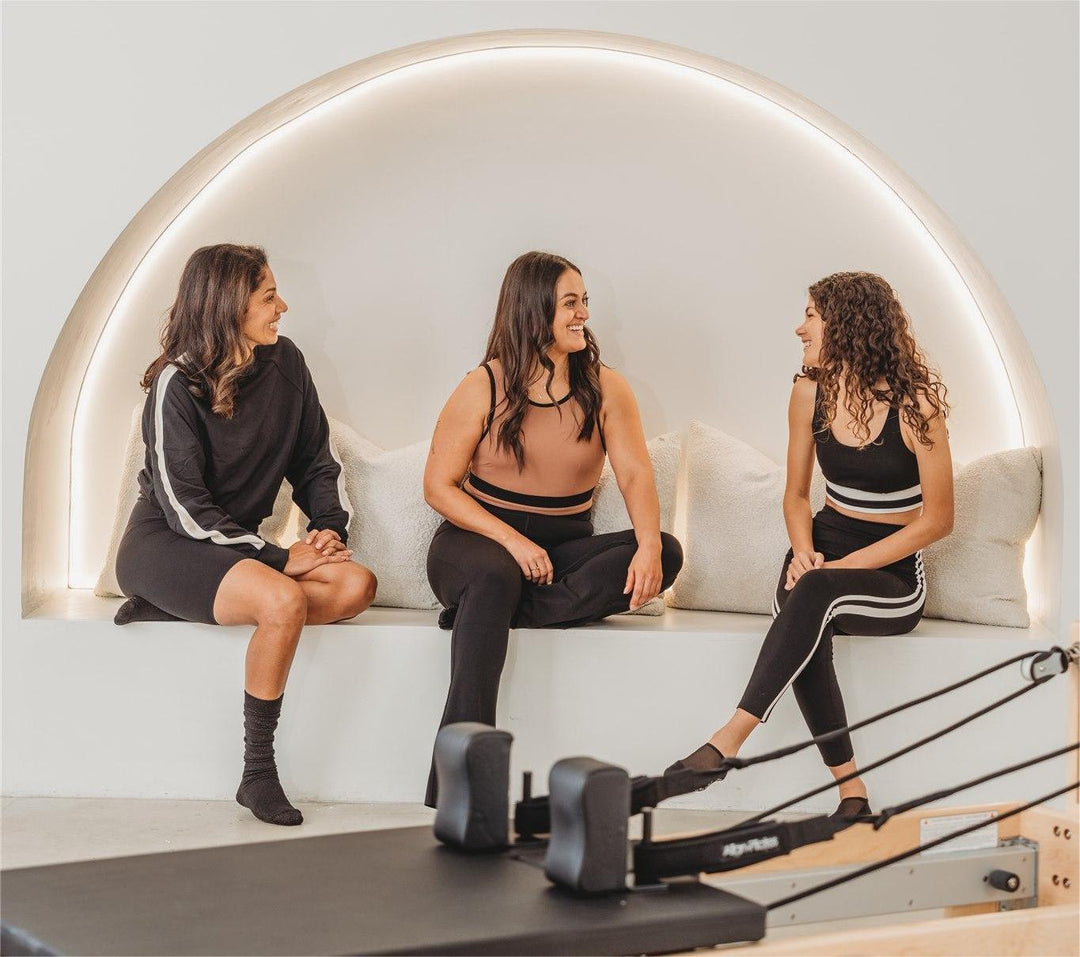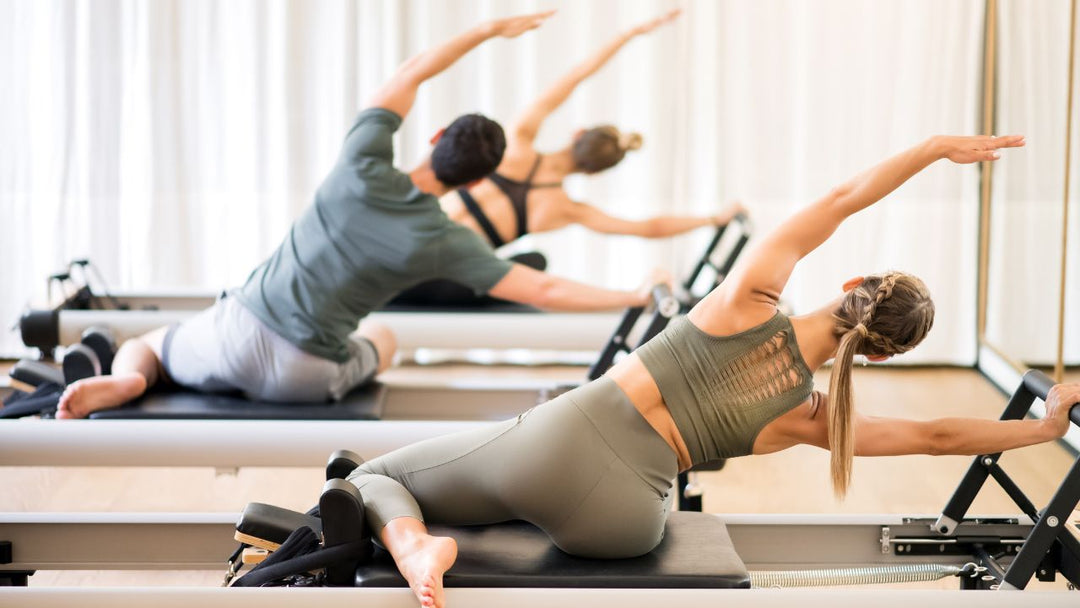Align-Pilates Springs
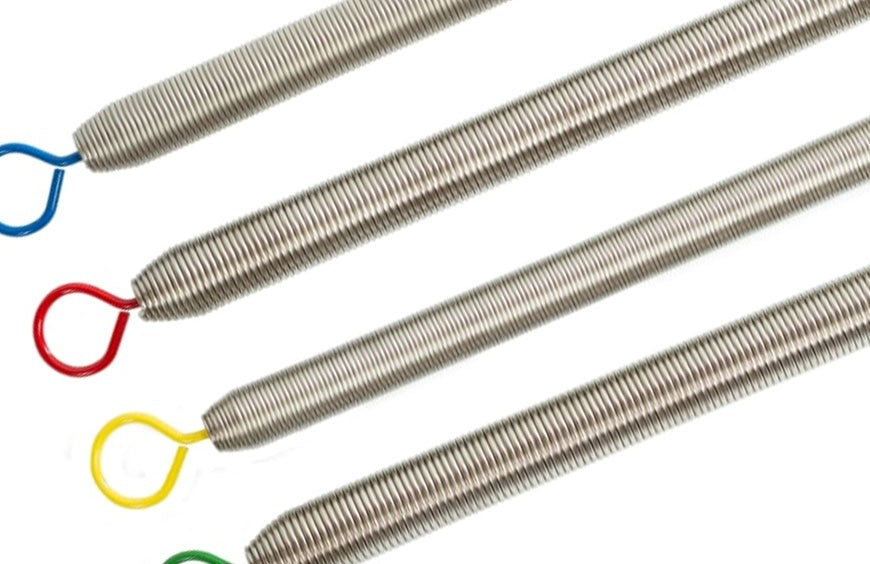
Pilates Springs – How Strong are they and how do Align-Pilates springs compare to other Pilates brands?
Pilates is not like weight training, where the weight being lifted is the key factor, indeed in Pilates less resistance is often more challenging and the amount of resistance required from the springs is primarily related to feel rather than kilograms! That said, many customers want to know how strong Align-Pilates’ springs are so they can compare them to other brands they have worked with or, so they can better understand the most effective way to increase resistance for different exercises.
Original Pilates Springs
Back when Joseph Pilates was alive reformers only had 4 springs and these were originally all of equal strength. After his passing, the Pilates Elders (those who had studied under Joe & Clara) discussed the need for a lighter spring and the Five Spring Reformer Machine was born. Soon after different manufacturers started to produce springs with different strengths to offer more variety and refinement in one’s choice of resistance.
The majority of Pilates manufacturers then started to colour code their springs and name them based on their level of resistance eg heavy/strong, medium, light, very light etc. The majority of brands would also equip reformers as standard with 3 different strengths of springs in either 3/1/1 or 1/2/2 set ups. Some brands, notably Stott Pilates chose to classify their springs as a % of their strongest spring i.e. by relativity offering 100%/50% & 25% springs. This system seems more objective, though in reality (according to data on Merrithew’s website*) the actual relativity of Stott springs does not approximate to the % names, it is actually more like 100%/66%/41% (similar to Align-Pilates 100%/60%/40%). Regardless of the system, the concept is the same as for a small increase/decrease add/remove the lightest spring, for a larger one the middle (if there are 3 different ones) and for the largest the strongest and vice versa. The important point is not the description but the range of resistances available and the size of possible increments, so you can get the right feel for the exercise being undertaken, regardless of who is using the reformer.
So what is the Align-Pilates spring set up?
Like the majority of brands Align-Pilates colour code their springs and categorise them by resistance as Extra Light (yellow), Light (blue), Medium (red) and Strong (green). A weight or resistance is not specified, as this is dependent on the amount of extension of the spring, but the data is shown in the table below. Align-Pilates Commercial Reformers come with the following 1/2/2 set up as standard:
1 x Green (Strong). The Full or, 100% spring
2 x Red (Medium). c. 60% of the 100% spring
2 x Blue (Light). c. 40% of the 100% spring
This choice of standard spring set up aims to achieve a wide spread of resistances, from very light to very strong eg 2.6Kg at 25% stretch with the lightest spring, to a maximum of 133kg with all springs attached at maximum travel on a C series reformer. In addition the set up allows for small increases, equivalent to half the resistance of the weakest spring for over half of the increments. The optimum progression is shown in the table below:
As 2 x blue (light) are 20% more than 1 x red (medium) and 20% less than 1 x green a really nice progression is possible with this set up. Others may prefer less precise ways to choose springs based on approximations like full, half, quarter, although as the springs are colour coded the use of the colour is move intuitive way of cuing spring adjustments with the Align-Pilates set up from the students perspective.
In terms of how many kilograms Align-Pilates’ spring resistance relates to, the table below shows the amount of Kg of resistance that each spring offers at different amount of stretch. This is based on 25% / 50% / 75% and 100% of the maximum stretch on our best-selling C8-Pro and C2-Pro reformers. The table is not particularly useful or relevant to Pilates practice itself, but it does serve as useful tool for comparison with other manufacturers springs.
All Align-Pilates springs are made from top quality nickel-plated Korean music wire, which offers the best life and a smooth linear resistance, so that the resistance increases steadily and evenly during extension. The graph below shows the smooth progression of the resistance provided at different levels of stretch.
How do Align-Pilates springs compare to other Pilates manufacturers springs?
Most leading brands offer data on the springs resistance by kg/cm or Lbs/Inch, which makes comparison relatively easy to undertake. In the majority of cases the Align-Pilates standard set up offers as low a resistance as other leading brands standard set ups, up to a slightly higher resistance than most, so few will need to change from the standard set up.
In terms of cueing spring changes in classes, users familiar with a Stott Pilates type approach of Full (100%) & half (50% ) style instruction can continue to do this, as in relative terms Align-Pilates spring percentages are very similar to Stott’s actual values as stated above, however in both Stott and Align-Pilates’ cases these % ages are approximations only. In absolute terms at 53cm (50% stretch) the Align-Pilates reformer offers a few extra kg of resistance with all springs attached whilst at the lowest end the Align-Pilates springs offer a near identical resistance to a standard/traditional Stott set up.
Other Align-Pilates Spring Set Ups
Some customers who focus on Clinical Pilates or, Rehab Pilates may be interested in a lighter set up than the standard set up and this can be achieved by swapping a blue (light) or, red (medium) spring for a yellow spring; the choice being dependent on how low a resistance you wish to achieve. Swapping a blue for a yellow to get a 1/2/1/1 set up is the most common – please speak with your distributor if you wish to change the set up on your Align-Pilates Reformer.
Few will require a heavier set up even in Fitness Pilates, though again this can be achieved by swapping a red (medium) or blue (light) for another green, or for a more subtle increase a blue (light) for another red (medium). Note if swapping from a 1/2/2 configuration to a 3/1/1 marginally increases the replication of resistances and the smoothness of the increments of change between adjustments, hence Align-Pilates prefers a 1/2/2 set up.
Spring Life
Please note that like most brands, Align-Pilates springs should be replaced every two years or 2,000 hours (whichever comes first). Pilates springs showing any sign or wear, kinking or distortion should not be used and should be immediately replaced.
Links to other Pilates Manufacturers spring data:
Balanced Body springs. Standard set up: 3 x Red (Med), 1 x Blue (light), 1 x Yellow (v. light) Reformer Springs | Balanced Body (pilates.com)
Merrithew or Stott Pilates Springs. Standard set up (Traditional Spring Package): 4 x 100% 1 x 50% or (High Precision Package) 3 x 100, 1 x 50%, 1 x 25% * Ask the Expert: Measuring Reformer Spring Tension | Merrithew Blog
Peak Pilates springs. Standard set up 1 x Heavy (red), 2 x Medium (yellow), 2 x Light (blue) Reformer Spring Resistance: The Basics | Peak Pilates Community
Basi Systems springs. Standard set up: 1 x Yellow (Light) 1 x Blue (Medium) 3 x Red (Heavy) Springs - BASI Systems - Finely Crafted Pilates Equipment
For any questions about spring resistance please email info@prateam.com.au


